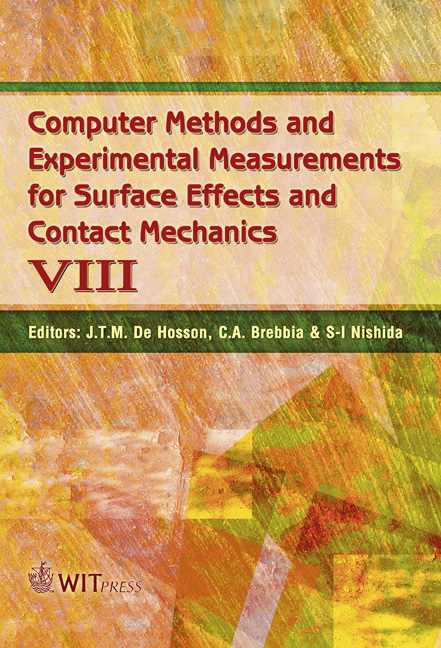Near Surface Modification Affected By Hydrogen/metal Interaction
Price
Free (open access)
Transaction
Volume
55
Pages
9
Published
2007
Size
861 kb
Paper DOI
10.2495/SECM070281
Copyright
WIT Press
Author(s)
Y. Katz, M. Tymiak & W. W. Gerberich
Abstract
Hydrogen/metal interaction represents a complex topic that attracted a high volume of experimental/theoretical efforts. Thus, for better understanding, ample activities have been conducted that spread over various levels and scales. The current study emphasizes some additional facets manifested mainly by confined and localized information. In this context, nano tests assisted by contact mechanics methodology provided small volume information to be even stretched to other surface related behaviour. This includes implications regarding the quantification of sequential events as related to hydrogen embrittlment (HE) or fracture processes transition. In addition, questions emerged regarding wear aspects or tribological contacts insights. Basically, the study considered free hydrogen (either external or internal) to be an aggressive environmental agent in elastic–plastic crystalline solids. Experimentally based information has been gathered in the bulk, supplemented also on the nano scale. In fact, this comprehensive study with emphasis on the scale effects provided striking insights. For example, in terms of contact tribological effects, normally mechanical driving force is solely considered. However, here, the unique contribution by environmental interaction includes phase stability effects and localized plasticity. Mainly two materials have been focused: first, as a background, AISI 316L metastable austenitic stainless steel, and secondly Ti/Cu, thin film specimens affected by hydrogen. The outcoming effects have been sorted out by mechanical response tracking and morphological visualization. Quantitatively, it was assessed by nano indentation and continuous scratch tests. Besides mechanical testing the information was supplemented by scanning Probe Microscopy (SPM) observations. It became evident that hydrogen affected dramatically the investigated systems with exploration of dislocation nucleation and dynamics. As such, remarkable differences occurred on both plastic localization and micro crack onset. In the thin layers the effective work of adhesion was reduced, indicating significant degradation that could be expressed quantitatively. Finally it was concluded that since fracture is a localized phenomena nano scale information might suggest \“critical experiments” so vital for fundamental concepts confirmation. Keywords: hydrogen embrittlment, metastable austenitic stainless steel, nano data, dislocation emission, wear.
Keywords
hydrogen embrittlment, metastable austenitic stainless steel, nano data, dislocation emission, wear.





